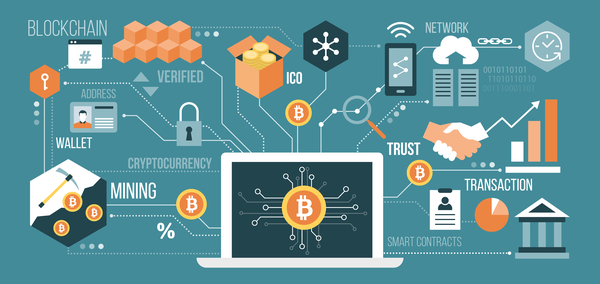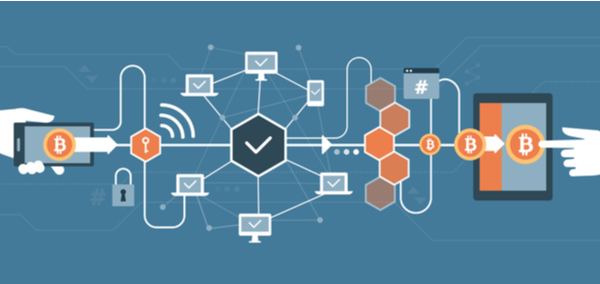Promising to transform the way the world transacts, blockchain is swiftly becoming a technology to be reckoned with.
One of Singapore’s largest importers of fruit, Hupco, signed up for the trial run of an emerging technology: blockchain electronic bill of lading, after a Proof of Concept (PoC) was announced on the IBM Blockchain Platform in October 2018. They brought in over 100,000 oranges from China just ahead of Chinese New Year, fresher and quicker than ever before. Using the blockchain platform, Hupco significantly reduced the time taken to process the bill of lading, a vital document in international shipping, from seven days to just one second.
Beyond oranges, blockchain technology is getting more prevalent everywhere, from healthcare to banks to consumer goods. What was once seen as the preserve of tech geeks is now the foundation of innovative new approaches that are gaining traction across the globe.

Blockchain Basics
At its core, the blockchain technology are blocks that comprise time-stamped series of an immutable record of data. The basic unit of a blockchain is a “block”, which contains different transaction data, and then linked in a chain. Each block is one-of-a-kind and encrypted with a unique code called a “hash function”.
Every participant or node in the network retains a copy of the blockchain, as well as a set of rules governing what counts as a legitimate transaction and how the network should reach a consensus. As every node has a copy of the whole blockchain, this technology is resistant to hacking as it is difficult to hack every single node in order to change all copies of the record.
The decision of when and how new blocks are added to the chain is also a serious matter. Proof of Work (PoW) is a commonly used consensus mechanism that involves using computing resources to solve complex puzzles in what is known in blockchain technology as “mining”.
Blockchain models are slowly moving away from notoriously energy-intensive PoW protocols to other consensus algorithms like Proof of Stake (PoS), Proof of Authority (PoA) or other hybrid variations, which seek to be less computationally-heavy and more secure.

Banking on Blockchain
One of the key appeals of blockchain technology is that it does away with third parties or intermediaries. For example, instead of going through the banking system, two people can transact in the form of Bitcoin and avoid paying administrative fees to the bank.
Given the potential of blockchain to disrupt the banking industry, it’s not surprising that the sector was one of the first few in Singapore to explore working instances of the technology. For instance, the Monetary Authority of Singapore decided as early as in 2016 to team up with industry partners to create Project Ubin, a trial exploring the use of distributed ledger technology (DLT) for clearing and settling payments and securities. In February 2017, a consortium of 37 financial institutions including the State Bank of India and Citibank came together to form BankChain, a network to implement blockchain solutions.
A consortium of banks, along with Infocomm Media Development Authority of Singapore, came together in 2017 to tackle an important aspect of banking — Know Your Customer (KYC). By creating a KYC blockchain, the consortium hoped to ease out the complex process that involves gathering details of each bank customer, which could prevent money laundering and terrorism financing. This became the first consortium in Southeast Asia to successfully complete a PoC process for a KYC blockchain.

Safely Bringing Blockchain Up to Speed
Another draw of blockchain technology is its transparency in allowing all network participants to view the same information stored on the blockchain. However, one of the reasons blockchain technology has yet to become fully mainstream is that this transparency also makes the system very slow; it takes time and considerable computing resources to reach a consensus.
As the number of transactions increase and blocks grow, transaction duration will be increased as nodes compete among themselves to complete incentivized transactions first. While Bitcoin, which has a maximum block size of 1MB, can conduct three or four transactions per second, it pales in comparison to Visa which can handle about 1,700 transactions per second.
One of the ways to help blockchains deal with larger scale operations is to do what is known as “sharding”, which is the process of breaking the blockchain into smaller parts that operate in parallel with one another. This way, each node will only need to process transactions within the relevant shard rather than all transactions in the entire network. Other approaches involve secondary protocols such as the Lightning Network for Bitcoin, which allows participants to create payment channels off the main blockchain.
While a potential slowdown to the network will be counterproductive to the entire blockchain mechanism, another threat that looms is that of a hack — as is the case with any technology. If over 50 percent of the mining power is controlled by miners with malicious intent, it could leave the blockchain vulnerable to an attack despite being guarded by stringent consensus mechanisms. This was precisely what happened to Bitcoin Cash in 2019.
To improve blockchain security, some projects are implementing zero-knowledge proofs, which are probabilistic assessments used to verify information without needing to convey any extra information.
Although blockchain technology is still at a nascent stage, it is increasingly gaining traction. Having demonstrated promise in everything from shipping fruit to banking, blockchain is a technology to watch. Look out for part two of our feature on blockchain to see how it is being used across the different sectors!

